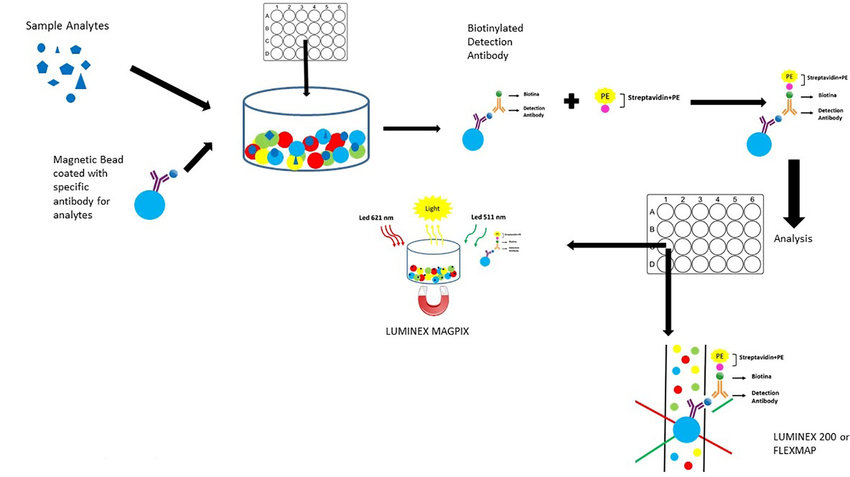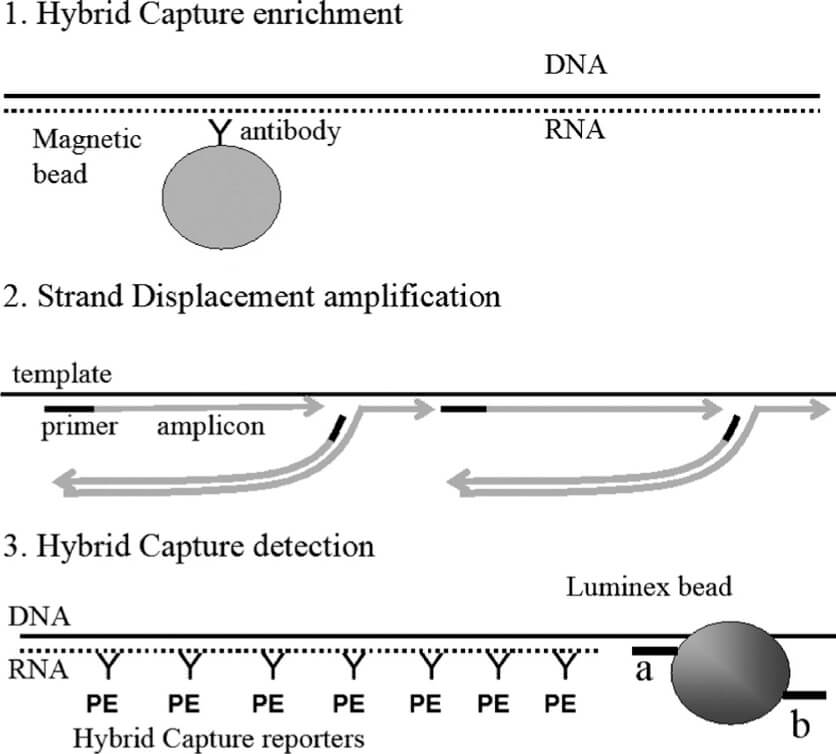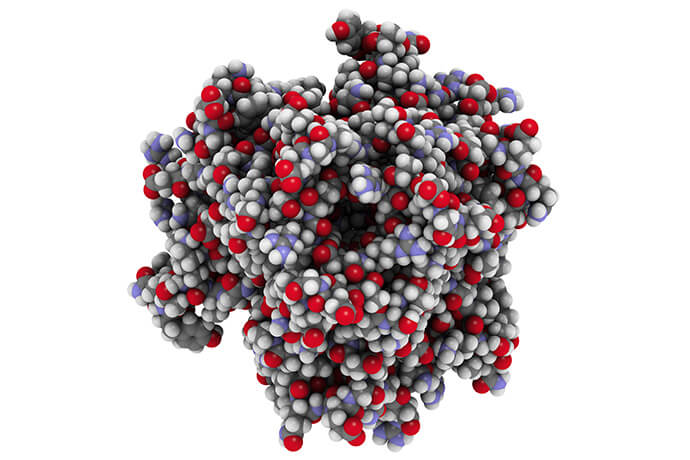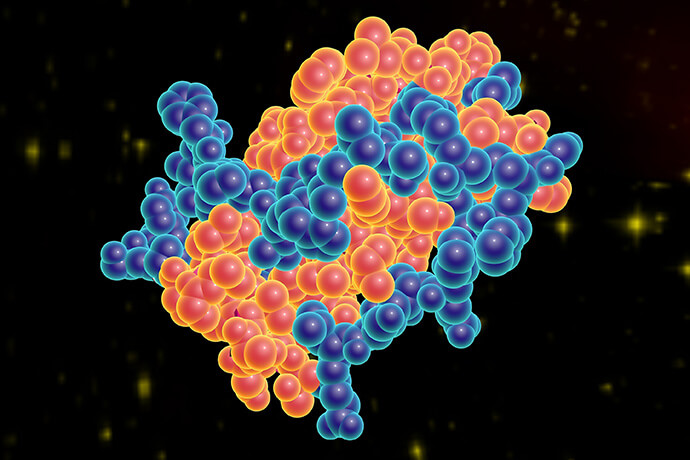Luminex technology is a versatile biochip platform based on the Luminex 100, a multifunctional, multi-metric parallel analysis system. It organically integrates color-coded beads with laser technology, applying fluidics, the latest high-speed digital signal processors and computer algorithms to create a high level of specificity and sensitivity. It can be used in a wide range of applications such as immunoassays, nucleic acid research, enzymatic analysis, receptor and ligand recognition analysis.
 Luminex Assay Principle (Koudriavtseva et al., 2020).
Luminex Assay Principle (Koudriavtseva et al., 2020).
Luminex multiplex technology was approved by the US Food and Drug Administration (FDA) in 2003 for use in clinical diagnostic testing.
Application of Luminex Technology in the Clinic
- Tumor marker analysis
Tumor marker analysis has wide applications in early diagnosis, efficacy detection, prognosis evaluation, early detection of tumor recurrence and screening of high-risk groups. Nowadays, the commonly used tumor marker detection methods include enzyme immunoassay, time-resolved fluorescence, chemiluminescence, electrochemiluminescence, liquid microarray and so on. Most of the individual markers have low sensitivity or specificity and cannot meet clinical needs. It is very important to be able to measure multiple markers at the same time. The combined application of tumor markers can improve the sensitivity of the assay. Quantitative multi-tumor marker assay is a new tumor marker assay established by using Luminex xMAP technology. This technique has obvious advantages in terms of the number of markers that can be measured at one time, specimen usage, test speed, reproducibility, reagent cost reduction, and platform versatility.
 A Luminex-based approach for multiplexing in vivo tumor growth and metastasis assays.
A Luminex-based approach for multiplexing in vivo tumor growth and metastasis assays.
- Autoimmune antibody detection
Autoantibodies refer to the immune response of the body's immune system to autoantigenic components such as normal or degenerated tissues, organs, cells, proteins or enzymes by some endogenous or exogenous factors, and the production of antibodies by the body's B lymphocytes against its own components. Autoantibodies are an important hallmark of autoimmune diseases, and each autoimmune disease is accompanied by a characteristic autoantibody profile. The presence of highly potent autoantibodies in the patient's blood is one of the characteristics of autoimmune diseases and an important basis for clinical diagnosis of autoimmune diseases. Comprehensive testing and analysis of autoantibodies is important in confirming the diagnosis and assessing the prognosis.
Commonly used autoantibody detection methods include microplate ELISA, immunoblotting, enzyme immunospot (strip) assay, etc. Luminex xMAP technology uses a double antibody sandwich method on the surface of microspheres to detect autoantibodies, which can detect multiple indicators in parallel and has higher detection speed and automation than traditional methods.
- Transplantation and Matching
HLA typing is an essential clinical tool used to analyze six antigens for the three loci of alleles A, B, and DR, which can provide valuable information about an individual's immune system and susceptibility to various diseases. While traditional serological typing methods have been commonly used in the past, they lack the specificity and resolution of molecular biology methods, which are now preferred in most HLA typing laboratories.
Currently, the most common methods for HLA typing are PCR-SSP and PCR-SS0, which use allele-specific primers to generate HLA type-specific amplification products for direct analysis by electrophoresis. However, these methods have limitations, including difficulties with automation, the inability to detect new alleles, and the need for continuous kit upgrades.
The Luminex technique for HLA typing is a more advanced approach that uses microbeads combined with probes specific for different HLA alleles. These probes are then hybridized with amplified DNA in a laboratory tube and detected using a flow-through principle. This technique offers high throughput and sensitivity, while also enabling haplotype analysis, which establishes an association between polymorphic sites on the same strand, thereby improving the specificity of typing.
Luminex Technology in Scientific Research
- HPV genotype detection
Human papillomavirus (HPV) infection is a leading cause of cervical cancer and its precursor lesions. The pathogenicity of HPV varies across multiple subtypes, and classification into high-risk and low-risk types has been established. HPV testing has become a critical method for cervical cancer screening, and genetic microarray technology is currently the primary approach for HPV genotype research. The Luminex xMAP technology, a high-throughput, multiplexed platform, allows for the detection and typing of multiple HPV subtypes in a single assay, making it a valuable tool in HPV research and diagnosis.
 Schematic diagram of the HC-WGA-LMX assay (Lowe et al., 2020).
Schematic diagram of the HC-WGA-LMX assay (Lowe et al., 2020).
- Cytokine assay
Cytokine assays have broad applications in basic molecular biology research, providing insights into disease mechanisms, as well as in clinical diagnosis and treatment. Monitoring cytokine levels comprehensively is clinically more relevant than assessing individual cytokines, as the interactions between cytokines are crucial to disease development. The Luminex xMAP technology enables the simultaneous detection of a wide range of cytokines, such as interleukins, interferons, tumor necrosis factors, colony-stimulating factors, chemokines, and growth factors, allowing for a more comprehensive assessment of cytokine profiles in biological samples. The multiplexing capability of this technology allows for the analysis of multiple cytokines in a single assay, making it an efficient and cost-effective tool in cytokine research and diagnosis.
- MicroRNA expression profiling
MicroRNAs are non-coding, short-stranded RNA sequences that play a key role in a variety of biological processes. Abnormal miRNA expression has been identified in some tumors, but the value of miRNA expression in tumor diagnosis has not been systematically studied. miRNA sequences are short (approximately 21 bp) and the similarity between different sequence families is very high.
Some studies have systematically investigated the expression profiles of 217 mammalian miRNAs from 334 tumor specimens including a variety of human tumor specimens using liquid core technology. The results showed that miRNA expression profiles could reflect the tissue origin and differentiation status of tumors, and also revealed a general down-regulation of miRNA expression in tumor tissues. By analyzing miRNA expression profiles, it was possible to successfully classify poorly differentiated tumors, whereas mRNA expression profiles were extremely inaccurate when applied to the same sample. These results suggest that miRNA expression profiling has important applications in tumor diagnosis. Luminex multiplex analysis technique for microRNA expression profiling is not only highly accurate and specific, but also can be easily used as a routine test.
- Diagnosis of infectious diseases
By immobilizing the diagnostic antigens or allergens of pathogens on the surface of microspheres, it enables rapid diagnosis of various infectious diseases such as AIDS (HIV), measles, herpes simplex, mumps, etc.
References:
- Koudriavtseva, Tatiana, et al. "Coagulation/complement activation and cerebral hypoperfusion in relapsing-remitting multiple sclerosis." Frontiers in Immunology 11 (2020): 548604.
- Lamar, John M., et al. "The Hippo pathway target, YAP, promotes metastasis through its TEAD-interaction domain." Proceedings of the National Academy of Sciences 109.37 (2012): E2441-E2450.
- Lowe, Brian, et al. "HPV genotype detection using hybrid capture sample preparation combined with whole genome amplification and multiplex detection with Luminex XMAP." The Journal of Molecular Diagnostics 12.6 (2010): 847-853.





